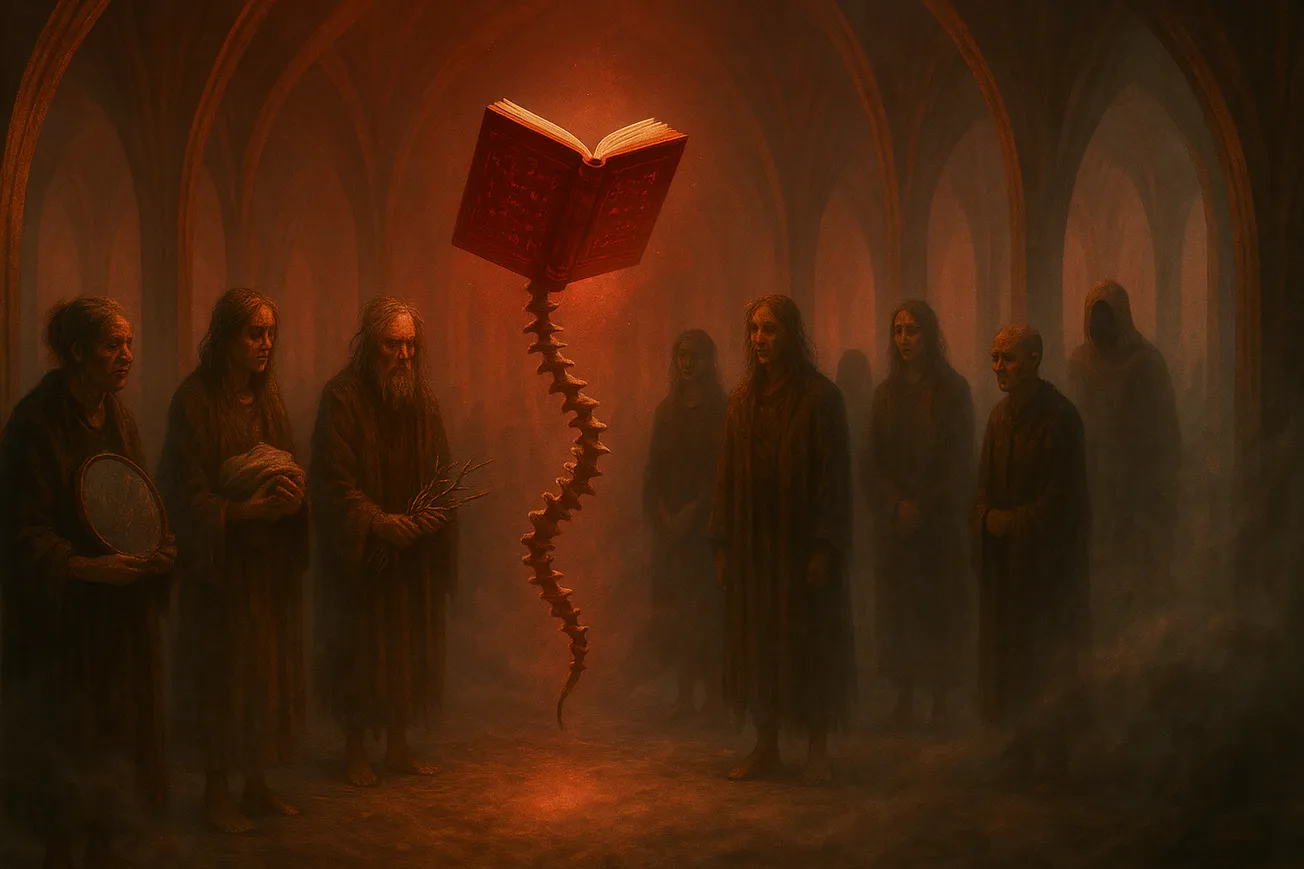🌈 The Fractal Story Engine | Body & Death | (12) BD-001-R
There are things we carry that no one sees. Not because we hide them, but because they were never designed to be witnessed. They are stored in the softest chambers of our lives: behind the eyes, beneath the ribs, inside the echoes of our names. Pain, in this way, becomes architecture. Not a disruption, but a secret blueprint. We learn to walk with it not because we are brave, but because we have no other map.
But what happens when pain becomes something transferable? Not symbolic, but literal. Not cathartic, but kinetic. What happens when the invisible ache beneath your skin can be given shape, weight, and passage?
The image of an Archivist receiving these burdens calls something up from the depths. The idea that pain, once carried, is not erased but recorded. Taken in. Cataloged in a living library of wounds. This is not heroism. This is not martyrdom. This is witnessing elevated to a sacred art. And that is rare.
In the real world, we are often trained to flinch away from others’ pain. To categorize it, avoid it, or rush to fix it. We build systems around this: bureaucracies that reduce it, industries that monetize it, religions that romanticize it. But true pain sharing is the act of entering another's ache without fear or agenda. It is a quiet, radical thing. It dissolves the fantasy of separation.
There is a kind of moral imagination required to take on the suffering of others. And not just in metaphor. To hold it in your bones as if it were yours. Most of us are not trained for this. We are conditioned to accumulate comfort, to optimize for ease. But what if the real measure of a soul is how much pain it is willing to metabolize, not for glory, but for healing?
The stranger in the story brings a pain that fractures the archive. That detail lingers. Because every system has its limits. Even the sacred ones. Even the ones that have stood for centuries. The stranger reminds us that some wounds arrive too large to store, too ancient to name. These are the generational traumas, the invisible wars, the stories that were never allowed to be told. When they surface, they do not seek comfort. They seek reckoning.
To receive someone’s pain is to become changed by it. Not ruined, but rewritten. There is a cost, yes. But there is also clarity. You begin to feel the lattice beneath all human lives. The way one person’s suffering echoes in the chest of another, across space and time.
Maybe that is what the spine of the Archivist represents: not strength, but alignment. A structure that allows for bending without breaking. The courage to remain upright while absorbing the sorrow of the world.
What can the reader learn from this story?
The ability to witness and carry another’s pain is not a weakness. It is a sacred form of strength. When we stop flinching and start listening without needing to fix or flee, we begin to unmake the myth of separation. Healing may not come from removing pain, but from allowing it to be seen, shared, and carried together.

